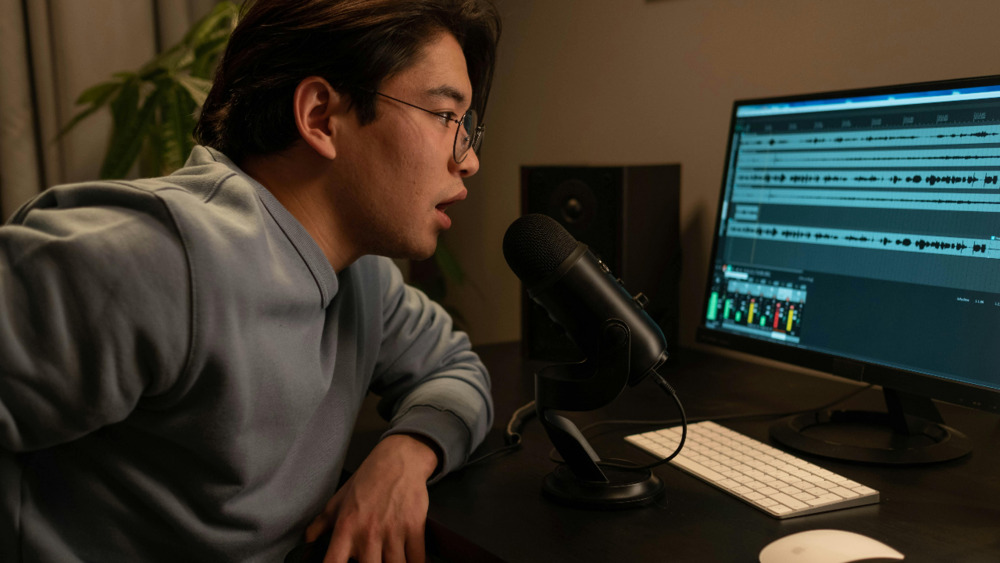
How Voice Localization Shapes Malaysian Storytelling
In today's connected world, voice localization is changing the way we tell stories in Malaysia. Our country is a vibrant mix of languages and cultures, which makes it a fantastic place for narratives to flourish. Voice localization helps make these stories relatable and accessible, bridging cultural gaps and enhancing engagement for everyone.
Bringing Entertainment to Life
The entertainment industry has really jumped on the voice localization bandwagon. In fact, with streaming platforms bringing content from all over the globe into Malaysia, voices in languages such as Malay, Mandarin, and Tamil allow creators to reach a much wider audience. For instance, when Disney films get dubbed in Malay, they become a collection of tales that families can witness together; thus, the joy shared when watching such films becomes an experience unique to Malaysians. Local adaptations often inject humor and cultural references that Malawians can relate to. This does not just keep audiences engaged but instills a sense of pride at local storytelling. When the characters reflect our own struggles, dreams, and humor, a real connection develops between us and the story, almost making it our own. Think about animated films where actors give life to characters. Their voices add layers of emotion, helping audiences connect on a deeper level. A character’s playful banter or heartfelt moments become more impactful when delivered in a language that feels like home.
Education Through Voice Localization
Voice localization isn't just about entertainment; it's also making waves in education. As e-learning continues to grow, localized voiceovers are becoming essential for creating engaging lessons. When educational content is available in a student’s native language, it helps them understand better and remember more. Imagine a science lesson where the narration is in Malay, using familiar expressions and relatable examples. This approach not only simplifies complex concepts but also makes students feel more at ease. For many, hearing lessons in their mother tongue fosters comfort and encourages active participation. E-learning platforms that offer courses in both Malay and English can reach a broader audience. This inclusivity is essential in a diverse country where language proficiency varies widely. Students who may struggle with English can access quality education in a way that feels natural and supportive. Voice localization can also help students with disabilities. By providing audio descriptions and localized voiceovers, educational content becomes more accessible. This commitment to inclusivity is crucial in building a more equitable educational landscape.
The Impact of Technology
Thanks to technology, voice localization is faster and smoother than ever. Tools like AI-driven voice synthesis and machine learning are streamlining the localization process, allowing for quicker results without sacrificing quality. In an age where content consumption is at an all-time high, this efficiency is a game changer. High-quality audio modulation means that localized voice-overs match the original content seamlessly. This attention to detail preserves the integrity of the story while making it more accessible. In Southeast Asia, where cultural nuances are vital, technology allows for a more nuanced approach to localization. The pandemic has also prompted voice actors to adapt to new methods. Many have invested in home studio setups and learned to navigate digital audio workstations (DAWs). This shift has opened up opportunities for local talents to seek international jobs, broadening their horizons. While these advancements are exciting, they raise questions about the future of studio-based work. As voice talents gain the skills to produce high-quality recordings from home, clients may look to bypass studios altogether. This is where organizations like the Voice Guild Malaysia (VGM) come into play, ensuring that industry standards are upheld and that voice actors are fairly compensated for their work.
Supporting Local Talent

One of the most significant impacts of voice localization in Malaysia is how it supports local talent. As the demand for localized content grows, opportunities for aspiring voice actors are on the rise. The VGM serves as a vital resource, offering guidance on industry standards, rates, and best practices for newcomers. Joining a professional guild can be a game-changer. It provides access to a network of experienced professionals and ensures that members are informed about fair pay and industry trends. The VGM acts as a trusted source for studios and production houses looking for talent, making it easier for local artists to showcase their skills. The guild also helps uphold professional standards by setting minimum rates for voice work and assisting in payment collection. Freelancers often face challenges when it comes to getting paid, with some waiting years to see their dues. By standing united, members of the VGM can advocate for fair compensation and protect each other from exploitative practices. Nurturing local talent is essential for creating a rich pool of voices that reflect Malaysia's diverse cultural landscape. This not only enhances storytelling but also ensures that future generations of talent have the support they need to thrive.
Collaborative Storytelling Across Borders
As the demand for localized content continues to grow, collaboration among Southeast Asian countries could lead to exciting storytelling opportunities. Voice localization will be crucial in this process, allowing stories to cross borders and resonate with diverse audiences across the region. For instance, as Malaysian content gains traction, there's a chance for cross-cultural collaborations with neighboring countries. This can lead to shared stories, ideas, and creative approaches to storytelling that enrich the whole region's narrative landscape. Voice localization can facilitate this exchange by ensuring that stories are accessible to audiences regardless of their language. As creators work together to adapt narratives, they can infuse their unique cultural perspectives, resulting in a more vibrant storytelling ecosystem.
The Future of Voice Localization
Looking ahead, the future of voice localization in Malaysia is bright. With technology continuing to evolve and the demand for localized content rising, there are endless opportunities for growth. As local talents hone their skills and gain experience, they’ll be well-equipped to take on new challenges and reach wider audiences. Moreover, as the industry adapts to changing consumer preferences and technological advancements, it’s important to keep the focus on quality and authenticity. The stories we tell should reflect the diverse experiences of our communities, fostering empathy and understanding among audiences from different backgrounds.
Conclusion

Voice localization is more than just a technical process; it’s a powerful tool that shapes storytelling in Malaysia. By making content more relatable and accessible, it helps build connections among diverse audiences and enhances educational experiences. As the industry continues to evolve, embracing local talent and cultural diversity will ensure that every voice is heard and every story shines. The journey of voice localization is ongoing, and with it comes the promise of richer narratives that celebrate Malaysia's unique identity. By supporting local talent and fostering collaboration, we can create a vibrant storytelling landscape that resonates with audiences far and wide. Ultimately, voice localization is about connecting people through the magic of stories, ensuring that every voice has its place in the narrative tapestry of Malaysia.
Ready to elevate your storytelling with expert voice localization services? Visit https://digital-trans.asia/ to learn more about our offerings. Contact us today to get started!